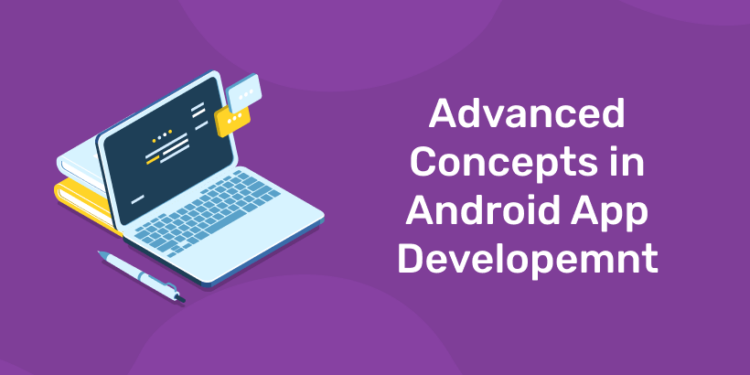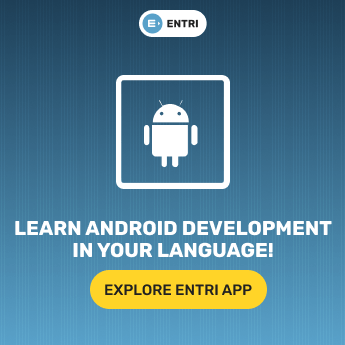The Android developers are compelled by constructing experiences that charm people around the world. And with people relying on their apps more than ever, anticipations are higher and their jobs as developers aren’t getting easier. in this article, we covered a few advanced concepts that are trying to help out, whether it be through Android 12, Jetpack, Jetpack Compose, Android Studio, and Kotlin to help you build beautiful high-quality apps. They are also helping when it comes to extending your apps wherever your users go, like through wearables and larger-screened devices. Here are a few highlights in Android App Development.
Advanced Concepts in Android
Android 12
Android 12 is one of the most prominent design updates ever. The first Beta of Android 12 just began rolling out, and it’s filled with lots of cool stuff. From new user safety qualities like permissions for Bluetooth and approximate location, enhancements to performance like expedited jobs and start-up animations, to entertaining experiences with more interactive widgets and stretch over scrolling, this disclaimer is one of the most major design updates to Android ever. You can start preparing your apps for the consumer release coming out later this year.
Jetpack Compose
For the last few years, the developers have been hard at work updating the Android development experience, listening to customers’ feedback to keep the openness–a hallmark of Android, but becoming more opinionated about the proper way to do things. You can see this throughout, from Android Studio, a performant IDE that can keep up with you, to Kotlin, a programming language that enables you to do more with less code, to Jetpack libraries that crack the hardest issues on mobile with backward compatibility.
The next step in this offering is Jetpack Compose – the modern UI toolkit to efficiently construct beautiful apps for all Android devices. With the Compose Beta earlier this year, developers around the world have constructed some truly beautiful, creative experiences in half the time.
Want to Know About Latest Trends in Android App Development? Download the ENTRI App Now!
Android Studio Arctic Fox
Android Studio Arctic Fox (2020.3.1) Beta, the most delinquent release of the official powerful Android IDE, is out to help the developers produce quality apps more comfortable and quicker. The updated suite of tools empowers three major themes: accelerate your UI design, extend your app to new devices, and boost your developer productivity. With this latest release, the developers can create modern UIs with Compose tooling, see test results across multiple devices, and optimize debugging databases and background tasks with the App Inspector. And also making the apps more accessible with the Accessibility Scanner and more performant with Memory Profiler. And for faster build speeds, we there are the Android Gradle plugin 7.0, new DSL, and variant APIs.
Kotlin
Kotlin is now the most employed primary language by professional Android developers according to the recent surveys; in fact, over 1.2M apps in the Play Store use Kotlin, including 80% of the top 1000 apps. And with a brand-new native resolution to annotation processing for Kotlin created from the ground up, Kotlin Symbol Processing is available today, a strong and yet simple API for parsing Kotlin code directly, showing speeds up to 2x faster with libraries like Room.
Register in and learn all about Android Development
Android Jetpack
With Android Jetpack, can create a suite of libraries to help reduce boilerplate code so the developers can concentrate on the code care about. Over 84% of the top 10,000 apps are now operating a Jetpack library. Here is unpacking some new releases for Jetpack, including Jetpack Macrobenchmark (Alpha) to capture large interactions that impact the app startup and jank before the app is released, as well as a new Kotlin Coroutines API for continuing data more efficiently via Jetpack DataStore (Beta).
Wearables
The best thing about the modern concept in Android development is that these tools have been intentionally made to help make it comfortable for you to build for the next era of Android, which is all about allowing devices connected to your phone–TVs, cars, watches, tablets–to work better together.
They take a huge step forward with wearables. First, introduced a unified platform built jointly with Samsung, combining the best of Wear and Tizen. Second, shared a new consumer experience with revamped Google apps. And third, a world-class health and fitness service from Fitbit is arriving on the platform. It means the developers have more reach, and be able to use all of the existing skills, tools, and APIs that make the mobile apps great, to build for a single wearable platform used by people all over the world.
Whether it’s new Jetpack APIs for Wear tailored for small screens and designed to optimize battery life, to the Jetpack Tiles API, so can create a custom Tile for all the devices in the Wear ecosystem, there are several new components to help to build on Wear. And with a new set of APIs for Health and Fitness, developed in collaboration with Samsung, data collection from sensors and metrics computation is streamlined, constant, and accurate–like heart rate to calories to daily distance–from one trusted source. All this comes jointly in new tooling, with the release of Android Studio Arctic Fox Beta, like easier pairing to test apps and even a virtual heart rate sensor in the emulator. And when the app is ready, users will have a much easier time finding the world of Wear apps on Google Play, with some big updates to discoverability.
Click Here to Download the ENTRI Learning App!
Larger screens, like tablets, Chrome OS, and foldable
People are increasingly depending on large screen devices to stay linked with family and friends, go to school, or work remotely. There are noted that over 250 million active large-screen Android devices. Last year, Chrome OS increased +92% year over year–5 times the rate of the PC market, making Chrome OS the most rapidly growing and the second-most widespread desktop OS. To help to take advantage of this momentum, there are APIs and tools to make optimizing that experience more comfortable: like maintaining the content resize automatically to more space by using SlidingpaneLayout 1.2.0 and a new vertical navigation rail component, Max widths on constituents to avoid stretched UIs, as well as updates to the platform, Chrome OS, and Jetpack window manager, so apps work better by default.
This is just a preference of some of the new concepts that are making it easier to build high-quality Android apps. Every year arrives with inventions, new concepts, and trends indicating transformations. Looking at the above-mentioned concepts of android app development, we can certainly say that the Android Operating System is moving unprecedentedly towards a very smooth experience targeted to nourish the client demands. You can check out more notes on Android Development in the ENTRI Learning App, where you can see new blog posts, notes, and more.













